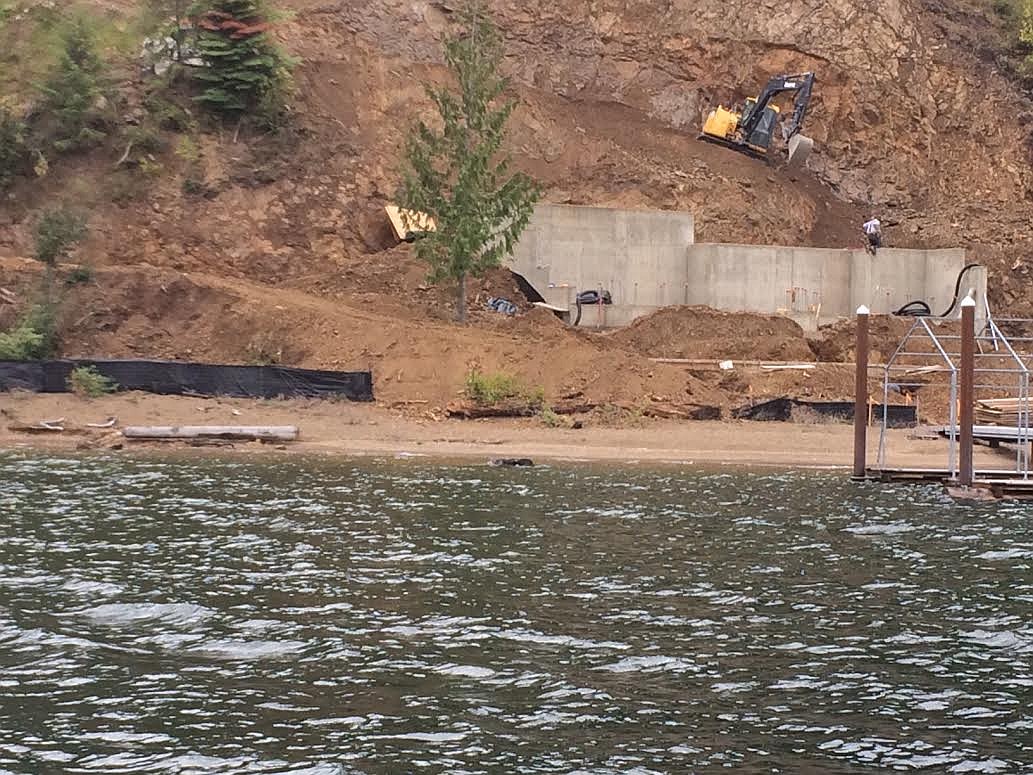Eyes on the shore
By MATTHEW GWIN
Staff Writer
The Kootenai Environmental Alliance now offers a way for citizens to report environmental violations near Lake Coeur d’Alene and the Spokane River.
At its monthly happy hour Thursday evening, KEA board members encouraged attendees to download The Water Reporter app on their smartphones.
The Water Reporter — an app used domestically and internationally by environmental advocacy groups — allows users to upload a picture, description, and exact GPS coordinates of a shoreline violation.
Local codes require a minimum of 25 feet of vegetated area next to a body of water, but only 25 percent of the shoreline along Lake Coeur d’Alene meets that standard, according to KEA.
Board member and waterkeeper representative Dennis Brueggemann said Kootenai County residents should have reason to be concerned by these numbers.
“It should be a wake-up call for us,” Brueggemann said. “If we lose the lake, we lose the main source of income for our community.”
These vegetated areas, called riparian buffers, protect shorelines by reducing the amount of phosphorus entering the water.
In contrast to the code for Lake Coeur d’Alene, the state of Washington mandates anywhere from 50 to 200 feet of riparian buffers, according to Brueggemann.
He said many developers and builders of lakefront property willingly ignore codes because they are rarely enforced.
“The developers know the codes,” Brueggemann said. “They just do what they want to do and wait for someone to slap their wrists.”
However, Brueggemann acknowledged that many homeowners may be unaware of the situation.
“A lot of homeowners just don’t know that what they’re doing may have a negative impact on the lake, so we just need to educate,” he said.
KEA hopes to open a dialogue and educate developers and landscapers so future projects will be environmentally conscious.
“Our strategy going forward is to engage developers and landscapers,” Brueggemann said. “We’re not against economic development, but we are for protecting the environment.”
In addition to the app, KEA also offers waterkeeper educational boat tours during the summer. The guided tours of Lake Coeur d’Alene and Spokane River are free and open to the public, and usually last about 3 hours.
“This is an exciting message to get policy makers and young kids out on the lake to see the good, the bad, and the ugly,” Brueggemann said.
As a result of smelting and mining byproducts, phosphorus levels in the lake are increasing while oxygen levels decrease. Lead poisoning and contaminated soil are among other risks.
According to KEA, 75 million metric tons of heavy metals lie at the bottom of Lake Coeur d’Alene, and an additional 35 million metric tons can be found near the north fork of the Coeur d’Alene River.
The Kootenai Environmental Alliance was founded in 1972 and is the oldest nonprofit conservation group in Idaho.
Its five pillars are forest, water, land use, wildlife, and climate action. The group also has five building blocks: advocacy, alliances, education, leadership, and community sustainability.
The Water Reporter app is available for Androids, iPhones and iPads.



